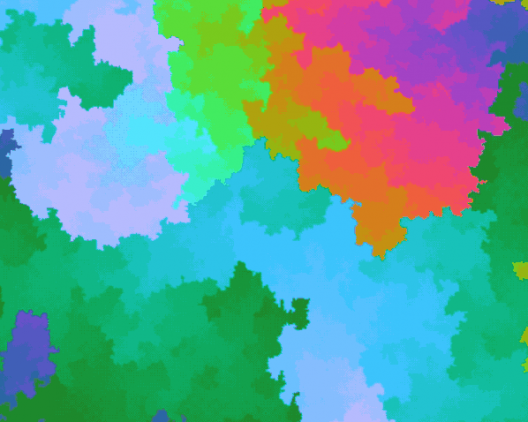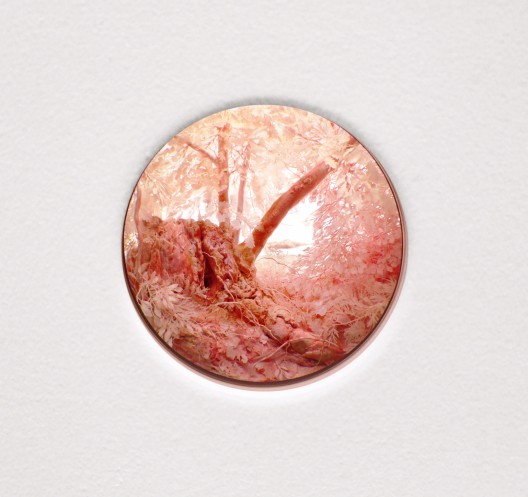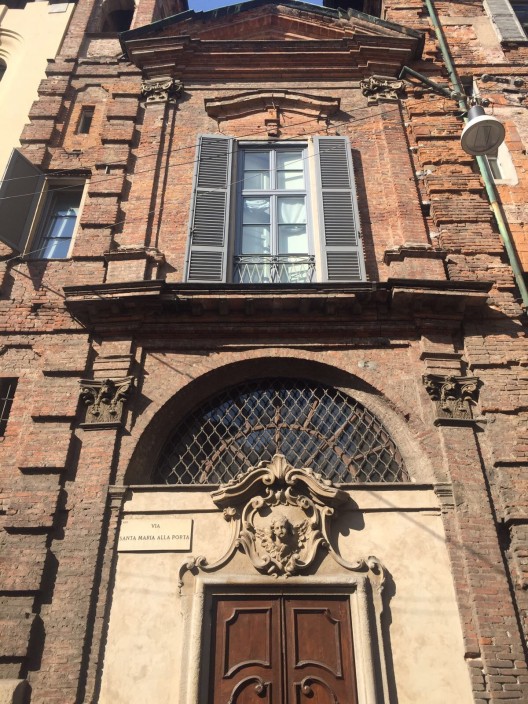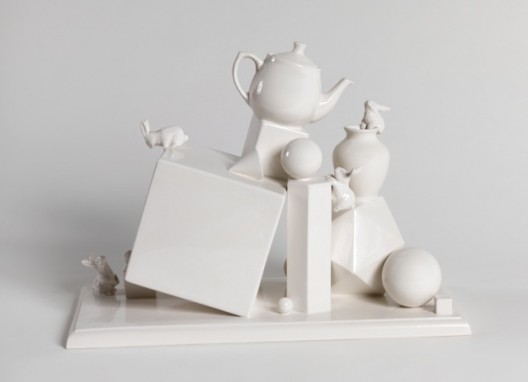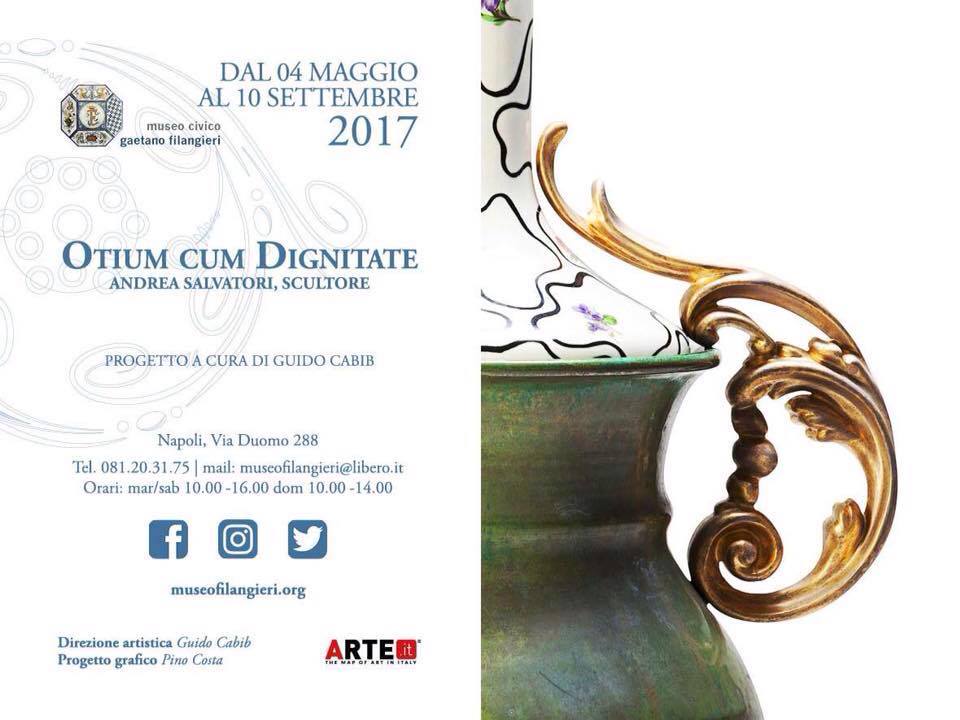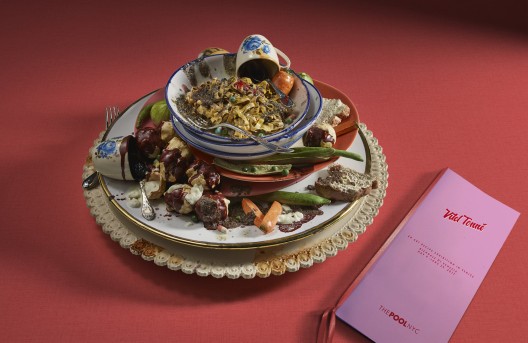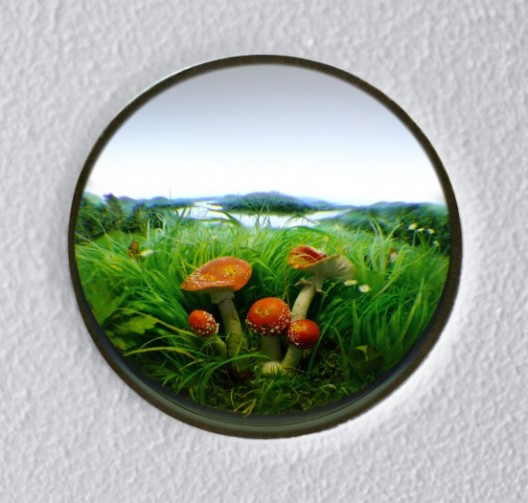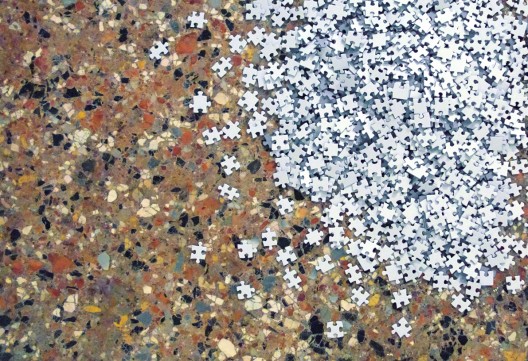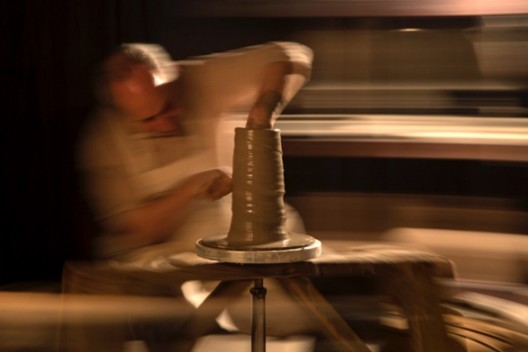SEMPRE colore, dagli albori dell’arte ai giorni nostri.
In Costante Colore i lavori in mostra sono un inno al colore, sono la materia pittorica sfaccettata secondo l’espressione di ogni singolo artista.
Ci concentriamo sulla declinazione dell’uso del colore per evidenziarne l’importanza e la costanza nel mondo dell’arte senza badar al tema o al medium del lavoro mostrato.
Il colore in vetro, in ceramica, in pastello, in neon, a penna, ad acquerello, a pennarello, in acrilico, ad olio, in video. Il colore acceso, tenue, metallico, primario, artificiale, naturale, complementare.
Il colore è materia, è odore, ingombro.
Il colore è vita.
Il colore suscita emozioni forti, tensione, ossessione, erotismo, azione, densità, gioia, euforia, lacerazione, movimento, dolore, desiderio, passione, imprevisto, possibilità, opzione, equilibrio, entropia, fisicità, trasfigurazione, proporzione, coerenza.
Il colore è la costante: l’unica grandezza che rimane invariata al variare delle grandezze con cui è in relazione. Per cui il colore non varia al variare dei media con cui è in relazione e dei secoli che passano.
Il colore esiste da secoli e continuerà a cangiare perché è qualcosa di imprescindibile e di caratteristico nell’arte: agisce da sempre con la medesima intensità.
La declinazione del colore avviene seguendo tempi e media diversi.
Nel Medioevo il colore doveva essere brillante e intenso, applicato con una forte saturazione, senza sfumature, per sottolineare il significato simbolico. Nel luogo divino il colore rivelava la presenza di Dio: i colori sono il frutto dell’interazione fra luce e oscurità.
Dal Duecento il colore che simboleggiava il più alto grado di nobiltà era il blu, metafora di spiritualità e trascendenza. Nella pittura murale il blu veniva usato per gli sfondi ed era realizzato con la tinta densa ottenuta dalla polvere dei preziosi lapislazzuli. Nella Certosa di Pavia il lapislazzuli utilizzato da Bergognone per l’Incoronazione di Maria tra Francesco Sforza e Ludovico il Moro appare ancora oggi di uno straordinario e lucente azzurro.
Il colore evolve, cambia, diventa caldo, fluorescente, diventa neon, diventa non colore.
Il bianco e il nero acquistano una grande importanza nella Storia dell’Arte.
Il colore fa chiarezza con l’Impressionismo, non si ferma con DaDa, illumina il Secessionismo, trionfa con la Pop-Art, degenera con l’Espressionismo, si sfoga con l’Astrattismo, si placa con il Minimalismo, soffre nell’Arte Povera, si stabilizza con la Transavanguardia. I movimenti artistici si susseguono, i secoli passano, il colore arde sempre.
Quando la televisione diventa a colori, l’immagine si accende, tutto prende vita e si illumina.
Il colore è esploso in tv, ma nell’arte vive da tempo: non c’è una tendenza che detta l’uso del colore. Nella moda c’è il colore dell’anno, ma non nell’arte, dove qualsiasi tonalità si può usare e con qualsiasi nuance si può osare.
Ci sono colori che erano impensabili qualche decennio fa. I colori risentono dell’atmosfera che c’è in quel dato momento storico e politico. I gusti si adeguano al pensiero del tempo.
C’è un senso cromatico che regna sovrano in ogni epoca. Senso cromatico inteso come una idoneità di colori uniti.
Il colore è sfinimento, è impressione, ridondanza, esasperazione, sofferenza, disagio, follia, esagerazione, sensibilità, estenuazione, tradizione, apparenza, sostanza, interiorità, espressione, maniacalità, immediatezza, riflessione, spontaneità, gestualità, ritmo, fuoco, caldo, freddo, insofferenza, magia, sogno, ricorrenza, spasmo, soffio, sessualità, intransigenza, zelo, solerzia, energia, assiduità, fastidio, bellezza. Il colore è naturalmente creatività, genialità, inventiva.
Always Colour, from the dawn of art till today.
In Costante Colore (Constant: Colour) the works on display are an ode to colour, the pictorial substance that is declined according to the expression of each artist.
We focus on the way of using the colour in order to highlight the importance and the constancy in the world of art regardless the subject or the medium of the work on exhibit.
The colour on glass, on ceramics, crayon, neon light, in pen and wash drawings, in acrylics, in oil paintings and videos. Bright, soft, metallic, primary, artificial, natural, complementary colour.
Colour is matter, scent, space.
Colour is life.
Colour arouses strong emotions such as tension, obsession, eroticism, action, joy, life, euphoria, rupture, movement, pain, desire, passion, surprise, chance, option, balance, entropy, physicality, transfiguration, proportion, coherence.
Colour is the mathematical constant: it is the only value that remains unchanged when the elements with which it is related change. Thus the colour does not change according either to the media with which it is related or to the centuries that pass by.
Colour has existed for centuries and will keep changing because it is part of the nature of art itself: it acts today, as it has always acted, with the same intensity.
The declination of colour follows different patterns of time and medium.
In the Middle Age, colours had to be bright and intense, applied with strong colour saturation, without nuances, in order to underline its symbolism. In the sacred place the colour revealed the presence of God: colours are the result of the interaction between light and darkness.
From the 13th century the colour symbolizing the highest nobility was blue, a metaphor of spirituality and transcendence. In the Certosa of Pavia the lapis lazuli used by Bergognone for the Coronation of Mary between Francesco Sforza and Ludovico il Moro still appears today an extraordinary and shining blue.
The colour evolves, changes, becomes warmer, more fluorescent, becomes neon light, becomes non-colour.
Black and white gain significance in Art History.
Colour becomes clarity with Impressionism, does not stop with DaDa, shines in Secessionism, triumphs with Pop-Art, degenerates with Expressionism, erupts with Abstractism, subsides with Minimalism, suffers in the Arte Povera, stabilizes with Transavanguardia. The artistic movements evolve, the centuries pass by, the colour keeps burning.
When the television develops colour, the image lights up, everything comes to life and lights up.
Colours exploded in TV, but lived for a long time in art. There is no trend that sets the standard for the use of colour.
In fashion each year has a colour, but art has not, and any shade can be used and with any nuance can be dared.
There are colours that were unthinkable a few decades ago. The colours are affected by the atmosphere in a particular historical and political moment. Tastes adjust to the spirit of the period.
A specific chromatic sense dominates every age. Chromatic sense means a balance of united colours.
The colour is exhaustion, impression, redundancy, exasperation, suffering, discomfort, madness, exaggeration, sensitivity, extenuation, tradition, appearance, substance, interiority, expression, mania, immediacy, reflection, spontaneity, gesture, rhythm, fire, warmth, cold, intolerance, magic, dream, recurrence, spasm, puff, sexuality, intransigence, zeal, alacrity, energy, assiduity, annoyance, beauty. Colour is naturally creativity, genius.
Artists:
Federico Solmi, Bertozzi & Casoni, Jonathan Rider, Stefania Fersini, Andrea Salvatori, Giuseppe Stampone, Patrick Jacobs, Francesco Mori, James Case-Leal, Joseph Kosuth, Aldo Mondino, Giulio Turcato, Gina Beavers, Eteri Chkadua, Bianca Sforni, Ercole Barovier, Fulvio Bianconi, Carlo Scarpa, Vinicio Vianello, Matteo Vinti.
Primo Dicembre 2017 – 16 Febbraio 2018
Vernissage: 30 Novembre 2017
Orario: Martedì-Venerdì, 11-13 / 15-19
Sabato: 15-19
December 1st 2017 – February 16th 2018
Opening Reception: November 30, 6-10 pm
Hours: Tuesday-Friday 2-7 pm
THE POOL NYC
Palazzo Fagnani
Via Santa Maria Fulcorina, 20
20123 Milano
DIORAMA
INVENTING ILLUSION
OCTOBER 6, 2017 – JANUARY 21, 2018
PRESS PREVIEW: THURSDAY, OCTOBER 5, 2017, 11 A.M.
REALITY OR ILLUSION: The Palais de Tokyo and THE SCHIRN KUNSTHALLE FRANKFURT PRESENT A MAJOR EXHIBITION DEDICATED TO THE IDEA OF STAGED VISION
From October 6, 2017 to January 21, 2018, the Schirn Kunsthalle Frankfurt presents a major exhibition dedicated to the cultural history of vision. It focuses on the diorama, which is used to reconstruct and realistically stage events, stories, and habitats with the aid of various means. Invented in the nineteenth century by the French painter and photography pioneer Louis Daguerre as a playhouse enlivened with light effects, it, as a glass showcase became the presentation form par excellence for natural history museums. The diorama stages human knowledge of the world, not without influencing and perpetually challenging the viewer’s perception. Being the first comprehensive examination of the diorama, the exhibition highlights both the various stories behind the development of this form of presentation and the correlations and chronological developments that took place parallel to it. The diorama has been a crucial source of inspiration to this day: Numerous artists of the twentieth and twenty-first centuries address questions of staged vision in their works by questioning and dissolving the illusion of a reconstructed reality.
The exhibition at the Schirn presents the early forms of the diorama in religious art and its beginnings in the playhouse and showman art of the nineteenth century, and considers the diorama as the preferred form of presentation for museums conveying natural-historical and anthropological knowledge. The deconstruction of the diorama in today’s art is illustrated by large- scale installations, contemporary dioramas, sculptures, photographs, and films by such artists as Patrick Jacobs, Richard Baquié, Marvin Gaye Chetwynd, Mark Dion, Isa Genzken, Robert Gober, Mathieu Mercier, Kent Monkman, Hiroshi Sugimoto, and Jeff Wall. The presentation develops an overall chronological narrative that traces the cultural history of vision and of exhibiting from various perspectives.
The exhibition “Diorama. Inventing Illusion” is supported by Verein der Freunde der Schirn Kunsthalle e.V.
Dr. Philipp Demandt, Director of the Schirn Kunsthalle Frankfurt, about the presentation: “The exhibition ‘Diorama. Inventing Illusion’ explores various possibilities for presenting artificial worlds. Often separated by a pane of glass, observers stand before a painted backdrop with three- dimensional objects, either lifelike or in miniature, and might also become aware of themselves and their position reflected in the glass. The diorama is an illusionist mise-en-scène that confronts us with fundamental issues of perception and authenticity.”
“Although the diorama embodies the age-old staging of ‘watching,’ it still forms a blind spot in our cultural history. The exhibition is the first broad-based examination of this topic and attempts to link up the various strands of the diorama’s origin. An exhibition about the diorama is also an exhibition about exhibiting. Each attempt to tell its story leads to the beginnings of exhibitions in the context of the first mass amusements and visual inventions. Contemporary artists consider the diorama to be a conceptual installation and an opportunity to deconstruct the visual techniques passed down from the nineteenth century–and thus a suitable means for doing justice to the expressive power of sculptural elements,” explain the curators of the exhibition, Katharina Dohm, Claire Garnier, Laurent Le Bon, and Florence Ostende.
Louis Jacques Mandé Daguerre (1781–1851) and Charles-Marie Bouton (1781–1853) are considered the inventors of the diorama – as an optical-mechanical playhouse. The first diorama opened in Paris in 1822 and, according to Daguerre, offered viewers “all means of illusion.” In this walk-in theater, stories painted on large, semi-transparent canvases were set in motion with light and stage techniques. Expanded in this way, the pictorial space brought a new, enhanced quality to illusionism. Numerous showmen adopted this process. Fairground visitors were thus able to marvel at illuminated canvases and dioramas with scenes of historical events, which were set in motion and accompanied by orchestral music when activated with coins. The exhibition at the Schirn includes, for example, Jean Paul Favand’s work Naguère Daguerre (2012), which relies on two restored canvases from a nineteenth-century mechanical theater. Using digital technology, the canvases are illuminated and tell the story of the eruption of Vesuvius in the Bay of Naples. The projection of the moving images onto canvas in the diorama made it a forerunner of cinema and 3D technology.
After 1900, the significance of the diorama concept changed in Europe and the USA, expanding into other areas. As a glass showcase, it established itself as the preferred form of presentation for natural-historical, anthropological and historical museum collections. Early forms, so-called proto- dioramas, can actually be found in religious art. These take the form of small and larger sculptural presentations behind glass, which were intended to bring the secret of faith to life. As objects of popular devotion, they became widespread in the seventeenth and eighteenth centuries. The exhibition includes works by the Neapolitan wax doll maker and nun Caterina de Julianis (1695– 1742), as well as the three-dimensional devotional image titled Paradis from the nineteenth century and small showcases that depict monastic life with the utmost precision.
The diorama as a museum installation with an illusionist effect ultimately brings science to the stage. It is a complex presentation form which–frequently inextricably linked to the architecture– sets the scene of a habitat and the original surroundings through the arrangement of objects against a painted background. The diorama not only combines objects but becomes one itself: It brings together various materials, such as plaster, textiles, fur, paper, wood, and paint, which are processed and arranged creatively by artists, anthropologists, and museum taxidermists to form an overall scene. The pieces on show at the Schirn include painted studies from 1926 for the African Hall at the American Museum of Natural History (New York), which the renowned mountain gorilla researcher and taxidermist Carl Akeley (1864–1924) set up, or a three-part habitat diorama using the example of the Alaskan snow sheep, as well as other natural-historical showcases by the naturalist and taxidermist Edward Hart (1847–1928). The first anthropological dioramas emerged in Europe in the 1870s and spread quickly. This development was supported by the World’s Fair in Paris. In the age of colonialism, dioramas served as propaganda tools and for the political justification of hegemonic power struggles. It was parallel to this that folkloric dioramas developed, with the aim of recording cultural material products for posterity, and thus, most importantly, preserving regional history.
With the new direction of dioramas at the end of the 1960s came their deconstruction in contemporary art. A crucial element of this development is the artistic reception of the work Étant donnés (1946–1966) by Marcel Duchamp (1887–1968). The Schirn is showing a precise, detailed reproduction of this artwork by the French sculptor and object artist Richard Baquié (1955–1996), Untitled. Étant donnés 1° la chute d’eau, 2° le gaz d’éclairage (1991). Through two holes in a wooden door, the observer does not gaze at a landscape but rather at a faceless woman with her legs spread and thus becomes a voyeur and the diorama a fantasy-producing machine. Baquié also debunks the immersive character of the diorama that offers its installation to be viewed from all sides. Duchamp’s legendary manual for Étant donnés analyzes the technology, mechanisms, and creation of the diorama and became something of a critical model for the conceptual photography of Canadian artist Jeff Wall (born 1946). The Schirn is showing the work The Giant (1992), in which Wall once again questions the optical and mimetic illusion of the photographic image.
Back in the 1970s, dioramas by the American Museum of Natural History inspired the early photography of Robert Gober (born 1954) and Hiroshi Sugimoto (born 1948). The exhibition presents a previously unpublished series by Gober from the year 1976. The shots play with two different levels of perception: Some leave the impression of scenes photographed in nature, while others emphasize the artificiality of the diorama and dissolve the effect of reality. The series Dioramas (1976–2016) by Japanese photographer Sugimoto critically tackles the promise of authenticity that comes with documentary photography and dioramas. In his black-and-white shots, the habitat of the diorama appears abandoned and morbid: The animals and plants become ghostly images of themselves.
The American artist Mark Dion (born 1961) questions the human presentation of nature and examines the function and the principles of arrangement characteristic of habitat dioramas. The Schirn shows his work Paris Streetscape (2017) developed specially for the exhibition. In a large- format glass showcase, Dion presents a section of the Paris cityscape. The garbage of civilization, plastic waste, and scrap metal seem to have entirely banished nature. The diorama is populated by animals native to cities, and thus breaks with the idyllic presentation of animals in their natural ecosystems. Dion renews the diorama as a form of presentation and enriches it with contemporary themes such as consumerist behavior and environmental pollution. His works are an echo of the works by the German sculptor Isa Genzken (born 1948), who is represented in the exhibition with Empire Vampire III, 12 (2004), and French artist Mathieu Mercier (born 1970). The latter goes beyond the illusory principle of the habitat diorama and populates it with a live pair of axolotls. The aquarium placed in the glass showcase is surrounded by peat; Mercier has created an environment for the animals that is as artificial as it is archaic, and points to the evolutionary step that is embodied, as it were, by these hybrid beings. His work stands in the context of a greater reflection on everyday objects, their symbolism and their use both in industrial and artistic contexts.
The exhibition was organized by the Schirn Kunsthalle Frankfurt in collaboration with the Palais de Tokyo, Paris, where it was conceived and first presented.
As part of the exhibition “Diorama. Inventing Illusion,” the painter and stage designer Philipp Fürhofer will present a new work in the Schirn Rotunda from November 9, 2017 to January 21, 2018. The work is supported by the SCHIRN ZEITGENOSSEN.
We are proud to announce the opening of THE POOL NYC permanent exhibition space at Palazzo Fagnani, in the heart of Milan.
Palazzo Fagnani is located in the Roman part of Milan, also known as 5 VIE, the city center.
The Palazzo was built in the “Barocchetto” Style and its special façade in bricks highlights the street.
THE POOL NYC will occupy the front part of the building, next to the beautiful church of San Matteo alla Banchetta.
The access to the gallery will be both on the street and through the magnificent courtyard, a typical sign of the XVII Century.
Andrea Salvatori Solo Exhibition at Museo Gaetano Filangieri.
Dates to be announced soon.
An Art Recipe Exhibition in Venice
THE POOL NYC at Palazzo Cesari-Marchesi
Calle Rombiasio 2539,
Campo Santa Maria del Giglio, Venezia
MAY 9-JUNE 25 2017
Vitel Tonné is a Piedmontese dish of cold, sliced veal covered with a creamy, mayonnaise-like sauce that has been flavored with tuna; it is also known as “the main course of an Italian meal or as an exceedingly elegant antipasto for an elaborate dinner”, Marcella Hazan, the famous authority on Italian cuisine, states.
Veal + tuna + mayonnaise, separately strong ingredients, with solid flavour, compose a great dish. According to canonical parameters on cooking, Vitel tonné should not exist, Fish + Meat = Forbidden! And if it did not, Italian cuisine would be sorely lacking.
But, there is always an exception, and it’s the peculiar nature that gives birth to a genius dish.
This culinary introduction, might sound like an odd premise for an art show, but it is only too appropriate for the organic exhibition that THE POOL NYC is presenting for this 2017 Venice Biennale at Palazzo Cesari-Marchesi.
We are proud to serve a selection of junk media and free range artists, very spicy and from various countries, all belonging to the same kitchen of ART.
Art, as we see it, is the Grande Cucina with many chefs, all with their own unique sense of personality, humor, fantasy, intelligence, sensitivity.
There is a common denominator that let arts stick together, even being from different centuries and origins, as it happens in magical recipes.
THE POOL NYC is happy to marinate, in the rooms of an old Venetian Palace of the XVIII century, a wide selection of Modern and Contemporary artworks for a digestible show.
Walking through the salons of the palazzo will entertain your eyes, will stimulate your spirit, and will nourish your cultural avidity. Every room is filled with a specific medium in order to satiate your need of ceramic, figurative painting, or photography without additives. Your artistic hunger will be satisfied by slicing every single work of art installed within the Palazzo.
The Menu is rich of interesting dishes, made of contemporary dairy free ceramic, organic paintings of the XX and XXI Century served in an old building.
This explosive dressing will regenerate your stomach. It will be a shake of artworks, to savor all together, or each separately. You can start with a vegan antipasto of photography and end with a glazed ceramic dessert.
The main salon, garnished with stuccos, hosts a convivial long table, where the whole art family, will peacefully dine, exchanging opinions despite their different nature.
In Italy we experience the Cuisine not just as a survival or Epicurean moment, but as a situation where we get together. We don’t care about nationality, dairy products, color, vegetarianism, taste, Extra Virgin Olive Oil, size, veganism, age, medium, political views, feminism, spacialism, abstract art, pop-art, we can live together and devour it all.
This is a gluttonous experience, and we are pleased to share it with you.
Il Vitel Tonné è un piatto tipico piemontese realizzato con il girello di vitello e la salsa tonnata. Si può guarnire con capperi e limone.
Vitello, tonno e maionese, ognuno con un sapore forte, danno vita a una ricetta favolosa.
Seguendo i canonici parametri della buona Cucina, il Vitel Tonné non dovrebbe esistere perché Carne + Pesce = Divieto Assoluto! Ma ecco l’eccezione che conferma la regola.
Questa introduzione culinaria potrebbe apparire bizzarra per una mostra d’arte, ma è assolutamente adatta per la organic exhibition che THE POOL NYC presenta a Palazzo Cesari-Marchesi in occasione della 57esima edizione de La Biennale di Venezia.
Acquolina in bocca per i più avidi collezionisti. Si tratta di una mostra ghiotta: vetri, ceramica, pittura, astratta e figurativa, video, installazioni, fotografia, disegni, acquerelli, diorami; una visione dell’arte come esperienza golosa, adatta a palati sopraffini.
Siamo orgogliosi di servirvi una selezione di junk media e artisti liberi, assai speziati e di varia provenienza, tutti però appartenenti alla stessa Cucina dell’Arte.
L’arte, per come la intendiamo, è la Grande Cucina con tanti cuochi, ognuno con la propria personalità, humor, fantasia, intelligenza e sensibilità.
Un comune denominatore fa sì che le arti, sebbene di secoli e luoghi diversi, ben convivano, proprio come nelle migliori ricette di cucina.
Nelle stanze di un antico palazzo veneziano del XVIII secolo, THE POOL NYC è felice di marinare un’ampia selezione di lavori di Arte Moderna e Contemporanea per una mostra davvero sfiziosa.
Camminare all’interno dei saloni del palazzo attrarrà i vostri occhi, stimolerà lo spirito e nutrirà la vostra avidità culturale. Ogni stanza è farcita d’arte per saziare il vostro bisogno di installazioni multimediali, di pittura figurativa, o di diorami senza conservanti.
Questo menu esplosivo vi rigenererà. Potrete cominciare con un antipasto di fotografia e finire con una spuma di ceramica invetriata.
La sala principale, guarnita con stucchi, ospita un banchetto dove l’intera famiglia dell’arte mangerà insieme, scambiando convivialmente opinioni.
In Italia siamo abituati a mangiare non tanto per sopravvivere o per il piacere del palato, ma soprattutto per stare insieme, come atto simposiaco. Non importa la nazionalità dei partecipanti, la loro età, il colore, l’appartenenza a una corrente artistica, che siano vegetariani, figurativi, o biodinamici; non discriminiamo nessuno per le visioni politiche o i media utilizzati; siamo aperti al Femminismo, allo Spazialismo, all’Astrattismo, alla Pop-Art; usiamo Olio Extra Vergine d’Oliva e acrilico; ci ritroviamo tutti insieme allegramente e divoriamo tutto quel che ci viene proposto.
Preparatevi a un’esperienza golosa, che noi siamo felici di condividere con voi.
Artists:
Ercole Barovier, Gina Beavers, Bertozzi & Casoni, Giacomo Cappellin, James Case-Leal, Eteri Chkadua, Marcel Dzama, Giorgio Ferro, Stefania Fersini, Piero Fogliati, Luigi Ghirri, Piero Gilardi, Giorgio Griffa, Riccardo Guarneri, Patrick Jacobs, Austin Lee, Sol LeWitt, Aldo Mondino, Niccolò Montesi, MVM, Luigi Ontani, Jonathan Rider, Andrea Salvatori, Antonio Scaccabarozzi, Carlo Scarpa, Peter Schuyff, Archimede Seguso, Bianca Sforni, Federico Solmi, Giuseppe Stampone, Fratelli Toso, Giulio Turcato, Ludwig Wilding.
Address:
Calle Rombiasio, Campo Santa Maria del Giglio, 30124 Venezia.
How to find us:
Once in Campo Santa Maria del Giglio, walk opposite to Canal Grande, pass the church of Santa Maria del Giglio on the left and Tessitura Bevilacqua on the right, following THE POOL NYC stickers.
Vaporetto stop: S. Maria del Giglio (same stop of the Gritti Palace)
Water access: Rio de l’Alboro (aka Rio de le Ostreghe)
Hours of Operation: daily 11 am – 7 pm and by appointment
Vernissage and Opening Reception: 9th May 2017 at 6 pm.
#thepoolnyc
#viteltonnevenezia
A special Thanks to Scaramouche NY for their collaboration
On the occasion of the 15th Architecture Biennale, THE POOL NYC is coming back to Venice with Show on Show, a solo exhibition by Stefania Fersini.
The show will run from 25th May through 27th November and it will take place at Palazzo Cesari-Marchesi, located in the Calle Rombiasio in Campo Santa Maria del Giglio adjacent to Piazza San Marco.
Stefania Fersini’s intervention will happen in a space with historical connotations, following the installations at Casa Mollino and Casa Fornasetti. The XVIII Century palace bears the signs of a range of architectural and decorative additions reflecting different times. Abandoned for 30 years the palace is now stripped and walking through it one can perceive a great past.
Show on show presents the place in its own place, generating a temporal perceptive and cognitive loop. It is a silent action to let space and time talk.
The artist has created for THE POOL NYC a work requesting the viewer’s participation.
Stefania Fersini scatters in the halls of the palace ten puzzles laid on recovered furniture. The visitor, finding empty seats, is invited ‘to play the game’, combining tile after tile of still unknown images.
The representation is exactly what the eyes can see while looking at the puzzle, but there are two main differences compared to reality: the first one is the temporal character, as the puzzle is still a messy pile of cards; the second one is the content: the tiles represent nothing, are white, without a subject.
Fersini’s site specific installation could be considered as a tautological gesture for the inherent desire to reveal on the puzzle what the eye can see during the composition of the puzzle itself. It involves the viewer’s interaction and in order to build the puzzle, she does not provide the resulting image, but the reality itself that is represented in the work. The “player” will find a fragmented reality broken in his hands. It’s a mise an abyme that needs to be defined and confirmed.
The subjects are perceived as matter in its details: colors, portions of the
pavement, walls, and wood.
The artist plays with our perception and let us reflect whether reality comes first than representation.
Fersini’s work questions time, which alludes to a becoming, at times perceived as ‘destroying’, in other as ‘creating’.
She expresses her critical relationship with the destroyed image, and asks the viewer to engage in the creation of the work.
The puzzle execution emulates the painting practice, chosen by the artist.
It’s her choice, and for herself.
‘We need time to solve problems and it’s our own time that leads us to the knowledge’.
Her cognitive research focuses again on a missing content.
Following Mirrors at Museo Casa Mollino and Casa Fornasetti, the artist’s use of the white states a missing visual work, to fill that void.
Fersini adds another piece to her journey, waiting to see if the road has taken the lead sooner or later to fill that white piece.
Stefania Fersini (1982) is an Italian artist.
She studied Product Design (faculty of Architecture) and she became part of Nucleo, a collective of artists and designers, based in Torino, Italy. Her designs have been exhibited worldwide over the past years and in the most important art and design fairs such as Design Miami, Artissima, PAD, and many more.
In 2012 she started a personal artistic project.
After a creative crisis Fersini became attracted to the meditative aspect of painting’s execution (precipitated by “The Anxiety of Influence” by Harold Bloom, philosopher Gilles Deleuze, and the studies of Lacan specifically relating to the pleasure principle by means of repetition).
Her last exhibitions include a solo show at Museo Casa Mollino, Torino and at Casa Fornasetti, Milano.
Her artwork has been exhibited extensively around the world. Important institutions such as Fondazione Sandretto Re Rebaudengo, Torino, Fondazione Querini Stampalia, Venezia, Casa Museo Boschi, Milano and selected galleries in Torino, Lucca, Milano, Los Angeles, London, Paris, Koln, New York and San Francisco have featured Fersini’s work.
Recently, she has been examining the context in which art is displayed and the exhibition itself as a medium.
This is the first solo exhibition with THE POOL NYC.
The Cornell Art Museum presents illuminating contemporary art in this group exhibition. Sixteen internationally recognized artists have used light to bring their creative vision to life. Artwork in this exhibit has been featured in galleries and museums worldwide.
Participating artists include Troy Abbot, Chris Bracey, Dominic Harris, Frank Hyder, Patrick Jacobs, Mark Khaisman, Claudia Meyer, Jason Myers, Meryl Pataky, Valentin Popov, Carol Prusa, Rubem Robierb, Erica Rosenfeld, Olivia Steele, Alex Trimino and Sam Tufnell.
Exhibit dates are April 28-August 28, 2016. Open Tuesday-Sunday, 10 am-4:30 pm
On the occasion of the 15th Architecture Biennale, the art gallery THE POOL NYC is coming back to Venice with Show on Show, a solo exhibition by Stefania Fersini.
The show will run from 25th May through 27th November and it will take place at Palazzo Cesari-Marchesi, located in the Calle Rombiasio in Campo Santa Maria del Giglio adjacent to Piazza San Marco.
Stefania Fersinis intervention will happen in a space with historical connotations, following the installations at Casa Mollino and Casa Fornasetti.
The XVIII Century palace bears the signs of a range of architectural and decorative additions reflecting different times. Abandoned for 30 years the palace is now stripped and walking through it one can perceive a great past.
Show on show presents the place in its own place, generating a temporal perceptive and cognitive loop. It is a silent action to let space and time talk.
The artist has created for THE POOL NYC a work requesting the viewer’s participation.
Stefania Fersini scatters in the halls of the palace ten puzzles laid on recovered furniture. The visitor, finding empty seats, is invited to play the game, combining tile after tile of still unknown images.
The representation is exactly what the eyes can see while looking at the puzzle, but there are two main differences compared to reality: the first one is the temporal character, as the puzzle is still a messy pile of cards; the second one is the content: the tiles represent nothing, are white, without a subject.
Fersinis site specific installation could be considered as a tautological gesture for the inherent desire to reveal on the puzzle what the eye can see during the composition of the puzzle itself. It involves the viewers interaction and in order to build the puzzle, she does not provide the resulting image, but the reality itself that is represented in the work. The “player” will find a fragmented reality broken in his hands. Its a mise an abyme that needs to be defined and confirmed.
The subjects are perceived as matter in its details: colors, portions of the pavement, walls, and wood.
The artist plays with our perception and let us reflect whether reality comes first than representation.
Fersinis work questions time, which alludes to a becoming, at times perceived as destroying, in other as creating.
She expresses her critical relationship with the destroyed image, and asks the viewer to engage in the creation of the work.
The puzzle execution emulates the painting practice, chosen by the artist.
Its her choice, and for herself.
We need time to solve problems and its our own time that leads us to the knowledge.
Her cognitive research focuses again on a missing content.
Following Mirrors at Museo Casa Mollino and Casa Fornasetti, the artists use of the white states a missing visual work, to fill that void.
Fersini adds another piece to her journey, waiting to see if the road has taken the lead sooner or later to fill that white piece.
Stefania Fersini (1982) is an Italian artist.
She studied Product Design (faculty of Architecture) and she became part of Nucleo, a collective of artists and designers, based in Torino, Italy. Her designs have been exhibited worldwide over the past years and in the most important art and design fairs.
In 2012 she started a personal artistic project.
After a creative crisis Fersini became attracted to the meditative aspect of paintings execution (precipitated by The Anxiety of Influence by Harold Bloom, philosopher Gilles Deleuze, and the studies of Lacan specifically relating to the pleasure principle by means of repetition).
Her last exhibitions include a solo show at Casa Mollino, Torino and at Casa Fornasetti, Milano.
Her artwork has been exhibited extensively in Torino, Lucca, Milano, Los Angeles, London, Paris, Koln, New York and San Francisco.
Recently, she has been examining the context in which art is displayed and the exhibition itself as a medium.
This is the first solo exhibition with THE POOL NYC.
The preview will take place on 25th May from 6 to 9 pm.
Address: Calle Rombiasio, Campo Santa Maria del Giglio, 30124 Venezia.
How to find us: Once in Campo Santa Maria del Giglio, walk opposite to Canal Grande, pass the church of Santa Maria del Giglio on the left and Tessitura Bevilacqua on the right, following THE POOL NYC stickers.
Vaporetto stop: S. Maria del Giglio (same stop of the Gritti Palace) Line 1
Water access: Rio de lAlboro (aka Rio de le Ostreghe)
Dates: 25th May-27th November 2016
Hours of Operation: from May 25 to June 12 daily 11 am 7 pm. From June 13 to November 27 by appointment only.
| On Wednesday, 20th January 2016, the Exhibition The Third Meaning. Giuseppe Stampone Sarnath Banerjee, curated by Eugenio Viola and Srinivas Aditya Mopidevi, will open to the public in the premises of the Italian Embassy Cultural Centre, New Delhi.This project was initiated through timely conversation between two curators, and two artists in the framework of a cultural exchange between Italy and India.
The two artists presenting work in this exhibition are Giuseppe Stampone and Sarnath Banerjee. Both artists approach their practice from different realities, whose research and work, though far away from each other, have the practice of drawing, in common. They investigate the contradictions and the restlessness of our times, representing realities, sometimes in a controversial and polemical way. In the practice of Stampone, drawing assumes a cognitive value, as of the ancient great masters of the Renaissance age intending to probe a scientific representation of the World. In this way, his usage of symbols and instruments conceal hidden meanings beyond their appearance, orchestrated in a process that textures the ideas in layers. Architecture of Intelligence (2016), is the site-specific project by Stampone realized during his stay in India as part of an ongoing series of iterations. It is an archive of experience in which Stampone stages an intergenerational dialogue with other artists and cultural figures, in this case with Italian artist Stefano Arienti and his reflections on living. The installation re-assembles found-objects to construct an emotional architecture. It restores the artists personal diary in the form of a metaphorical housing unit, built for holding images in which the impressions of the places visited are condensed and preserved. Here, the viewer is invited to enter, to take part and share the experience it offers. Throughout the practice of Sarnath Banerjee, the process of interlacing the textual and the visual is placed in high importance. This collation is presented within the graphic novel form, which becomes a tool for the artist to intercept history, mythology and popular culture in India and other parts of the world. Banerjee stages fictional situations of real places thereby altering the perception of what they mean to us. His recent project All Quiet in Vikaspuri (2015), is one such account, a tale that narrates the story of a plumber and search for the fictional river Sarasvati and the consequent life journeys this process leads him to. The book recently released to the public is in fact a fictional account that speaks about the water wars of Delhi, while the city heads towards becoming one of the global megapolis. For the first time Banerjee unbinds the book into individual drawings and sequences presenting to the public as an installation. Italian Embassy Cultural Centre, New Delhi 50 E, Chandragupta Marg, Chanakyapuri New Delhi 110021 The exhibition will be open till February 20, 2016 |
Ben Hagaris Potters Will (2015) will be on view at Rose Art Museum, after THE POOL NYC’s presentation in the Ball Room of the exhibition “A Palace with a View” (Veneziam 2015). Potter’s will melds the prehistoric art of pottery making with contemporary video art, reconfiguring primordial myths related to creation and destruction, life and death. In this multimedia installation, organized by Faculty Curator Gannit Ankori, a potters rotating studio is on display as both a physical site and a projected sight, inviting the audience to engage in an immersive experience.
The first part of the video documents the transformation of a lump of clay into a beautiful pot, molded by the masterful hands of Paul Chaleff. The potters wheel like the eye of the storm is strangely still within the whirling set. The next section follows the pots metamorphosis into a clay-covered human being, confronted by the kilns fire. Deliberate allusions range from Adam and the serpent of Genesis to ancient Egypts divine potter Khnum. Additional archetypal references include the four elements (water, earth, wind and fire), geometric symbols (squares that transform into circles) and the tail-biting snake, the Uroboros.
Hagari is the inaugural recipient of The Chami Fruchter Prize, a biennial award presented to an emerging Israeli video artist, administered jointly by the Rose Art Museum and the Tel Aviv Museum of Art. A publication, co-edited by Ankori, will accompany the exhibition.

